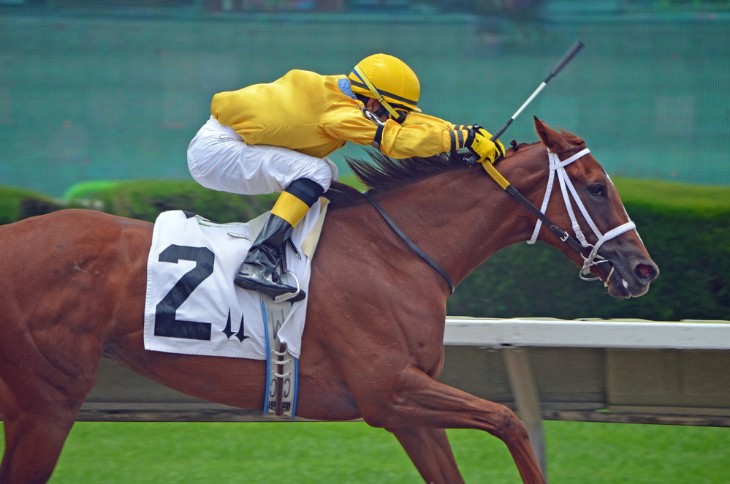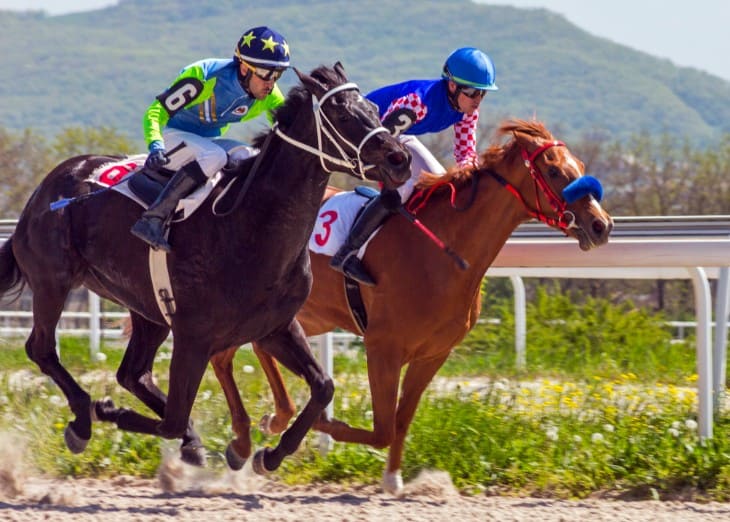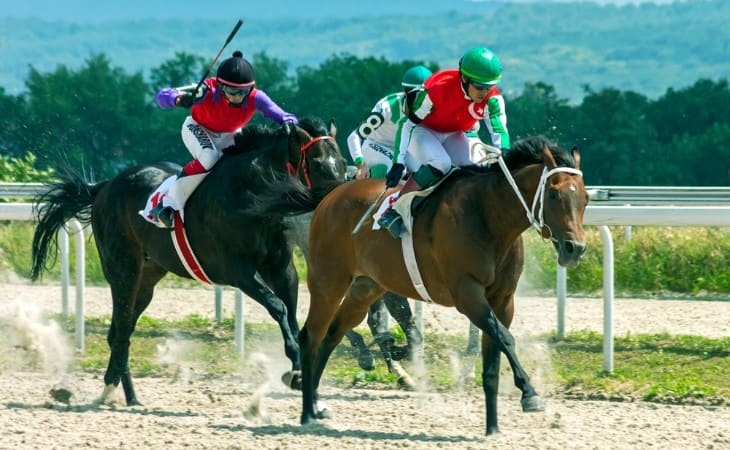Introduction
In the world of horse racing, the notation "P" carries substantial weight, indicating that a horse was pulled up during a race due to various reasons such as injury, exhaustion, or equipment issues. This designation has significant implications for both bettors and bookmakers, leading to adjustments in odds and influencing betting strategies. Understanding the impact of a "P" in a horse's past performances is crucial for those engaging in horse race betting, as it provides valuable insights into the horse's recent form and potential challenges, shaping the decisions of bettors and bookmakers alike.
Meaning of P in Horse Racing
Have you ever wondered what does P mean in horse racing? When you see a "P" in the past performance section of a horse, it indicates that the horse was pulled up during a race. More precisely, the letter "P" typically refers to the fact that a horse was pulled up by its jockey during the race. When a horse is pulled up, it means the jockey has intentionally stopped the horse from racing at full speed, usually due to an injury or some other issue. This decision is made in the best interest of the horse's well-being. When you see a horse's past performance with a "P" notation, it indicates that the horse did not finish the race because it was pulled up by the jockey.
And by “pulled up”, we think of the intentional act of a jockey stopping a horse during a race. This is usually done due to injury, exhaustion, equipment failure, or other issues affecting the horse's ability to continue racing safely. When a horse is pulled up, it does not complete the race and is carefully examined and treated by veterinarians and trainers to ensure its well-being.
So, let’s take a closer look at some of the most common reasons:
Injury or Lameness
In the context of horse racing, "injury" and "lameness" are terms used to describe conditions that affect a horse's physical well-being and can significantly impact its ability to race. Here's a more detailed explanation of these terms:
1. Injury:
Injury in horses can encompass a wide range of physical problems, including muscle strains, ligament tears, joint injuries, cuts, bruises, or even fractures. These injuries can occur during training, in the paddock, or during the race itself. Common causes of injuries in horses include overexertion, missteps, collisions with other horses, or accidents related to training equipment. Racing injuries are a significant concern in the horse racing industry, and both trainers and veterinarians work diligently to prevent them through careful training regimens, proper rest, and regular health checkups.
2. Lameness:
Lameness refers to an abnormal gait or difficulty in moving, typically caused by pain or discomfort in one or more limbs. Lameness can result from various factors, including injuries to muscles, tendons, ligaments, bones, or joints. Horses suffering from lameness may limp, favour one leg, or exhibit an uneven stride. Lameness can be temporary or chronic, and it significantly affects a horse's performance and overall well-being. In horse racing, even minor lameness can be a cause for concern, as it can worsen if not properly addressed, potentially leading to more severe injuries.
Diagnosis and Treatment:
When a horse exhibits signs of lameness or sustains an injury, it is crucial for experienced veterinarians to diagnose the problem accurately. Diagnostic tools such as X-rays, ultrasounds, and MRI scans are used to identify the nature and extent of the injury or lameness. Once diagnosed, appropriate treatments are administered. These treatments can include rest, physical therapy, medication for pain and inflammation, and in some cases, surgery. Rehabilitation programs, including controlled exercise and monitored recovery periods, are essential to ensure the horse heals properly and can return to racing, if possible, without risking further injury.
In the context of horse racing, trainers and veterinarians closely monitor horses for any signs of lameness or injury. Horses are carefully examined before and after races, and if any issues are detected, appropriate actions are taken to ensure the horse's health and well-being. The goal is to provide the best possible care to keep the horses in good condition and minimize the risk of injuries and lameness.

Tiring
This refers to a horse becoming fatigued or exhausted during a race. When a horse tires, it means that it has expended a significant amount of energy and is struggling to maintain its speed and performance. This can happen due to a variety of reasons, including the distance of the race, the horse's fitness level, the pace of the race, and external factors such as weather conditions.
Here are some key points about tiring in horse racing:
- Distance: Horses have specific optimal race distances based on their breeding, training, and physical condition. If a horse is entered into a race that is longer than its ideal distance, it might tire towards the end as it struggles to maintain the necessary speed and endurance.
- Pace: The speed at which a race is run (the pace) can greatly affect how a horse performs. If a race starts at a very fast pace, horses that cannot sustain such speed might tire early in the race. Conversely, if the pace is slow, horses with a strong finishing kick might tire less and perform better in the latter part of the race.
- Fitness Level: Horses, like athletes, need to be in peak physical condition to perform well in races. Horses that are not adequately conditioned or have not undergone proper training might tire quickly, especially in longer races.
- Weather Conditions: Extreme heat or humidity can cause horses to tire more quickly, as they exert more effort to cool their bodies down. Similarly, racing on heavy or soft ground due to rain can be physically demanding and lead to quicker fatigue.
- Jockey's Tactics: Jockeys play a crucial role in how a race unfolds. If a jockey pushes a horse too hard early in the race, it might tire prematurely. Experienced jockeys use strategic pacing and timing to conserve their horse's energy for the crucial moments of the race.
- Impact on Performance: When a horse tires, its speed decreases, and it might drop back in the field, losing positions to other horses. Tiring horses are less likely to finish strongly, potentially affecting their overall race performance and finishing position.
Trainers and jockeys closely monitor a horse's fitness level and select races that align with the horse's abilities to minimize the risk of tiring. Proper training, conditioning, and race selection are essential factors in ensuring that a horse can maintain its performance and avoid excessive fatigue during races.
Equipment Malfunction
In horse racing, "equipment malfunction" refers to issues arising from the gear or tack worn by the horse, which can affect its performance during a race. Horses wear various types of equipment designed to ensure their safety, facilitate communication between the horse and jockey, and optimize their racing performance. When this equipment malfunctions, it can pose significant challenges to the horse and jockey during a race. Here are some common types of equipment used in horse racing and how malfunctions can impact races:
- Saddle: The saddle is a critical piece of equipment that provides stability and comfort to the jockey. If a saddle slips or becomes loose during a race, it can cause the jockey to lose balance, making it difficult to control the horse effectively.
- Bridle: The bridle includes the bit, reins, and other straps that help the jockey guide and control the horse. If a bridle breaks or a rein snaps, the jockey may struggle to steer the horse, affecting its ability to respond to commands and navigate the racecourse.
- Girth: The girth secures the saddle on the horse's back. If the girth loosens or breaks, the saddle can slip, causing the jockey to lose control or even fall off the horse.
- Horseshoes: Horseshoes are metal shoes fitted to a horse's hooves to protect them and provide traction. If a horseshoe comes loose or falls off during a race, it can lead to uneven footing, discomfort, and potential injury to the horse.
- Blinders/Blinkers: Some horses wear blinders or blinkers, which are cups attached to the bridle to limit the horse's peripheral vision. This helps the horse focus on the race without distractions. If blinders malfunction or fall off, the horse might become distracted, affecting its performance.
- Leg Wraps/Bandages: Horses often wear wraps or bandages on their legs for support and protection. If these wraps come undone or become tangled, they can impede the horse's movement and cause discomfort.
- Impact on Races: Equipment malfunctions can lead to erratic behaviour, loss of control, or diminished performance during a race. Jockeys must adapt quickly to these situations, sometimes pulling up the horse to prevent accidents. Races affected by equipment malfunctions often result in the affected horse being pulled up or finishing far behind the other competitors.
Trainers and stable staff are responsible for inspecting and maintaining the horse's equipment to ensure it is in proper working condition before each race. Regular checks and quality gear play a crucial role in preventing equipment malfunctions and ensuring the safety and performance of both the horse and the jockey.
Stewards' Inquiry
A Stewards' Inquiry in horse racing is an official investigation conducted by the racecourse stewards to examine an incident that occurred during a race. The purpose of the inquiry is to determine if there were any rule violations, interference, or any other irregularities that might have affected the outcome of the race.
- Initiating an Inquiry: Stewards can initiate an inquiry based on various situations, such as a jockey's objection, an inquiry lodged by the patrol judges or track officials, or if the stewards themselves observe an incident that raises concerns.
- Types of Incidents: Stewards' Inquiries can be triggered by a wide range of incidents, including alleged fouls, interference, dangerous riding, or any behaviour that might compromise the fairness and safety of the race.
- Fouls and Interference: If a jockey believes they were impeded by another horse or jockey during the race, they can file an objection, prompting an inquiry.
- Dangerous Riding: Stewards can investigate incidents where a jockey's riding tactics are deemed dangerous or reckless, potentially putting other horses and riders at risk.
- Investigation Process: During the inquiry, the stewards review race footage from various camera angles to assess the incident thoroughly. They may also interview jockeys, trainers, and other relevant personnel to gather additional information.
- Decision: After careful consideration, the stewards make a decision regarding the incident. If a violation is confirmed, penalties can be imposed on the jockey(s) involved. Penalties may include fines, suspensions, or disqualifications. If a horse is disqualified, it loses its official finishing position and any associated prize money.
- Appeals: In some cases, affected parties (such as jockeys, trainers, or owners) have the right to appeal the stewards' decision, seeking a review by racing authorities.
Stewards' Inquiries are crucial in upholding the integrity of horse racing, ensuring fair competition, and maintaining safety standards. They play a vital role in addressing concerns related to the conduct of the race, thereby fostering confidence in the sport among participants and spectators alike.
What Happens When a Horse is Pulled Up?
Logically, when a horse is pulled up, it is recorded as a "Did Not Finish" (DNF) in the race results. A DNF status indicates that the horse encountered a situation during the race that prevented it from completing the course. Racing authorities and track officials closely monitor such situations to ensure the safety of both the horses and the jockeys.

Implications: A Brief Look
There are various potential consequences or effects that arise as a result of a specific action, decision, event, or situation. In the context of horse racing, there are several implications that can arise from various factors, events, or outcomes.
- Race Results: The outcomes of horse races have significant implications, especially for bettors, owners, trainers, and jockeys. For bettors, it determines winning and losing bets. Owners, trainers, and jockeys' reputations and future opportunities can be influenced by the results of races, impacting their careers and financial standings.
- Injuries: Injuries to horses, jockeys, or other personnel involved in racing can have far-reaching implications. For horses, injuries can affect their racing careers and overall well-being. Jockeys and other individuals can face time off from racing due to injuries, impacting their earnings and ability to participate in future races.
- Betting Implications: Race results, as well as unexpected events such as disqualifications or horses not finishing (DNF), have implications on betting outcomes. Payouts for bets are directly influenced by race results and any official decisions made by stewards or racing authorities.
- Horse Health and Training: The health and fitness of horses are paramount in racing. Implications can arise if a horse is found to be unfit to race or if there are concerns about its health. Trainers need to adjust training regimens based on the horse's condition, which can impact its future performance.
- Regulations and Rules: Implications can arise from changes in racing regulations and rules. New rules or changes in existing rules can impact how races are conducted, horse eligibility, jockey conduct, and more. Participants in the racing industry need to stay informed about these changes to comply with the regulations.
- Public Perception: High-profile incidents, controversies, or exceptional performances can shape public perception of horse racing. Positive events, such as an underdog horse winning a major race, can enhance the sport's reputation, while negative incidents, such as doping scandals or animal welfare issues, can lead to public scrutiny and affect the sport's image.
Understanding the implications of various factors in horse racing is essential for stakeholders, including bettors, owners, trainers, jockeys, and racing enthusiasts. It allows them to make informed decisions, adapt strategies, and anticipate potential outcomes, contributing to the overall management and success of the sport.
Impact on Betting
Now that we know what does P mean in horse racing, let’s talk about its impact on betting. The letter "P" in a horse's past performances indicates that the horse was pulled up during a race. This status has a significant impact on betting, affecting both bettors and bookmakers.
The presence of a "P" in a horse's past performances can influence betting decisions by raising concerns about the horse's ability to perform well. This status often leads to adjustments in odds, potentially impacting the potential payouts for bets involving the horse. Bettors use this information to make more informed choices when placing their wagers in horse racing events.
- Betting Decisions: For bettors, seeing a recent "P" in a horse's past performances raises concerns about the horse's fitness and form. Bettors might be hesitant to wager on a horse that has been pulled up in its recent races, as it suggests potential health issues, lack of stamina, or other problems that could affect its performance.
- Odds Adjustments: Bookmakers and betting platforms adjust the odds of horses based on their past performances. A horse with a recent "P" is likely to have higher odds, reflecting the perceived risk associated with its performance. Higher odds mean potentially higher payouts for those who choose to bet on the horse if it manages to perform well despite the past issues.
- Exotic Bets: In exotic bets such as exactas, trifectas, and superfectas, the presence of a horse with a recent "P" can significantly influence the bet's potential payout. If a horse with a "P" finishes in one of the top positions, it can lead to unexpected and substantial payouts for those who included it in their exotic bets due to the higher odds associated with that horse.
- Scratches and Replacements: If a horse is scratched (withdrawn from the race) due to a "P" status or other reasons, bookmakers adjust the odds and betting options accordingly. This can lead to a reshuffling of bets and strategies among bettors who need to adjust their selections based on the changes in the field.
- Informed Betting: Knowledgeable bettors often use past performance information, including "P" designations, to make more informed betting decisions. They may consider the context of the horse's previous races, trainer and jockey records, and other factors before deciding whether to place a bet on a horse with a "P" in its history.
Summary
In this short article, I’ve tried to give you an answer to what does P mean in horse racing. So, to sum up, the letter "P" in a horse's past performances indicates that the horse was pulled up during a race, often due to injury or exhaustion. This designation significantly impacts betting decisions, leading to higher odds for horses with a recent "P." Bettors tend to avoid horses with this notation, as it suggests potential health issues or lack of stamina. The presence of a "P" can also influence exotic bets, potentially leading to unexpected payouts if a horse with a "P" performs well. Knowledgeable bettors use this information to make informed decisions, considering the horse's history and context before placing their bets.
For more information:








